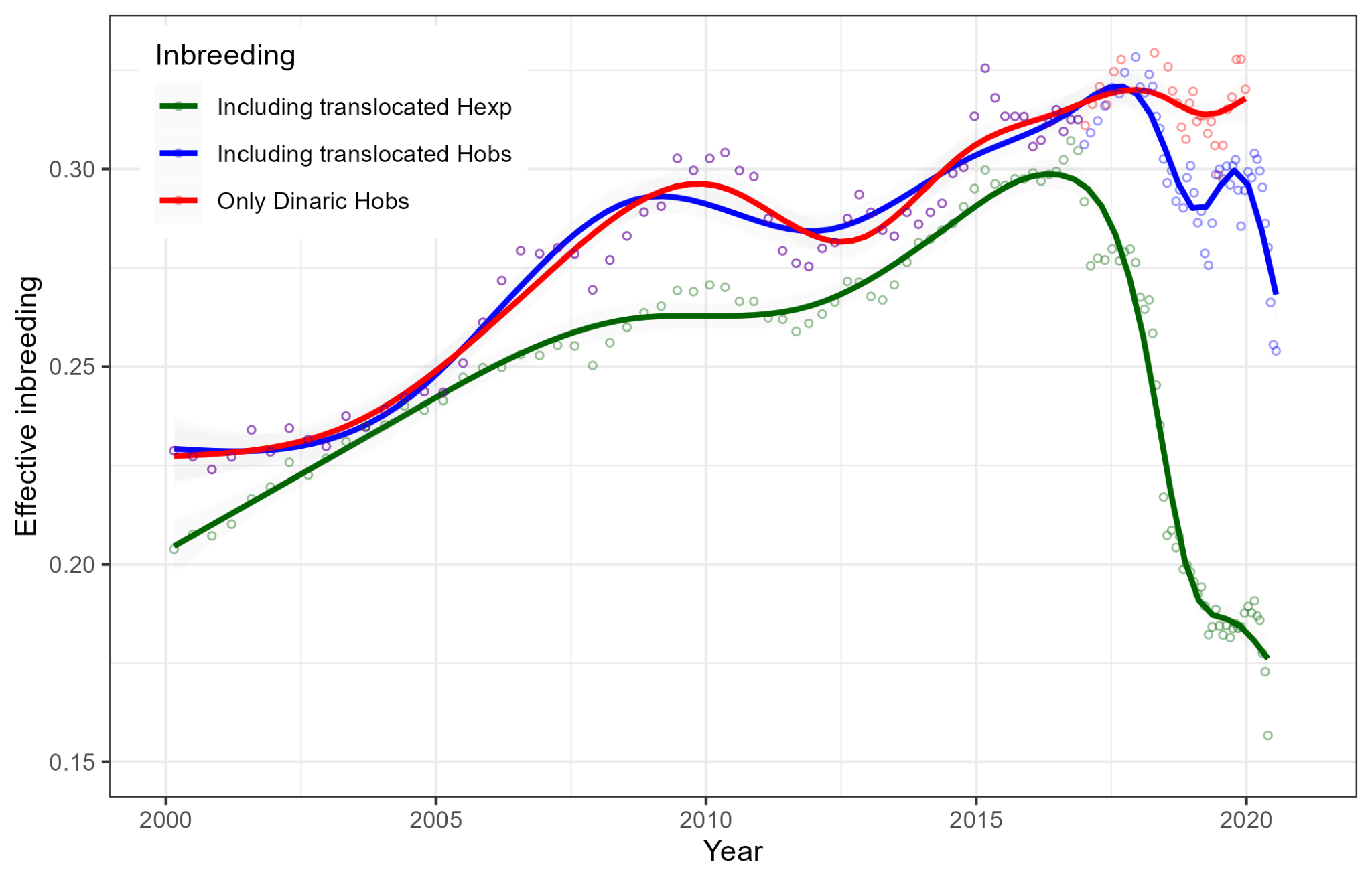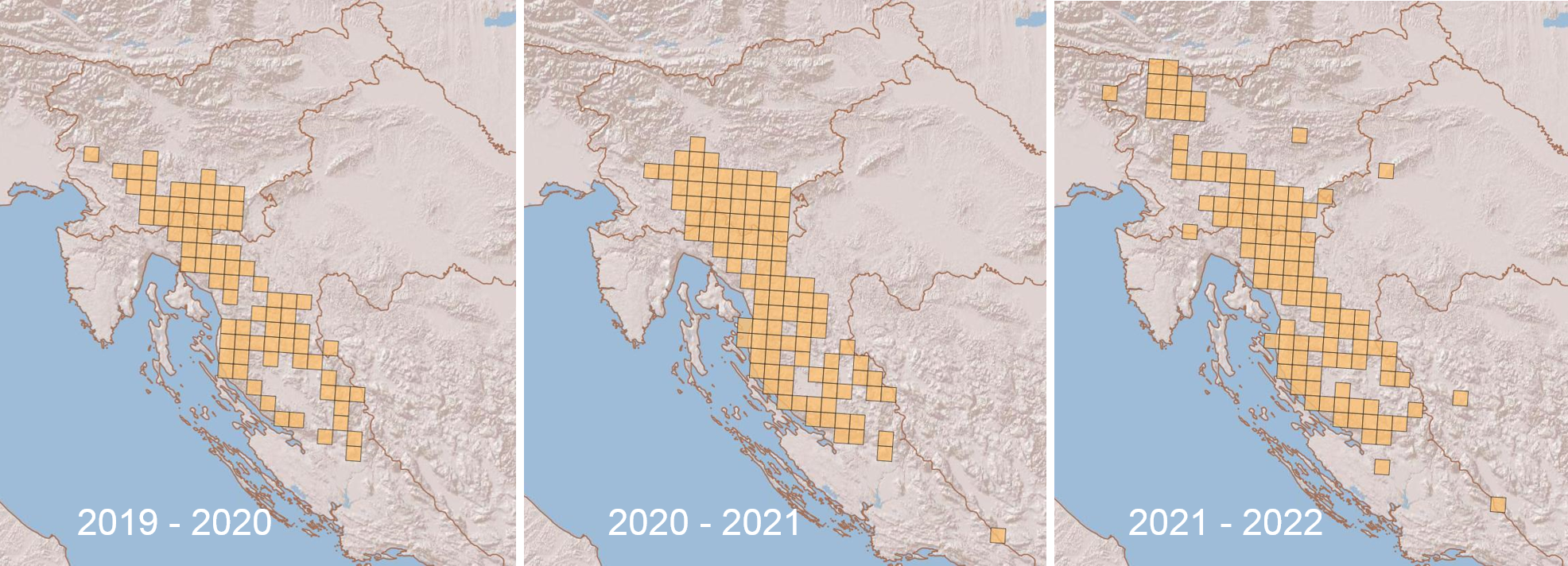LIFE Lynx project partners from the Dinaric Mountains and the SE Alps have produced the third consecutive annual status report on the Dinaric-SE Alpine lynx population. We noted that 10 animals, translocated from the Carpathians, have already successfully integrated into the Dinaric-SE Alpine lynx population. Genetic analyses have also confirmed the integration of two offspring of the translocated lynx. The introduced individuals and their offspring are improving the genetic picture of the population; we have detected a decrease in inbreeding, which demonstrates the positive effect of the introduction of new individuals on the genetic diversity of the existing population.

Effective inbreeding (Fe) of Dinaric lynx relative to the source population in Slovak Carpathians, calculated using heterozygosity in the Slovak lynx. Red – indicating situation without translocations; blue – the current situation, green – indicating the potential for a rapid inbreeding decrease if the translocated animals continue to successfully reproduce and their offspring form ~40% of the population.
In the 2021-2022 season, we monitored by telemetry: 11 introduced lynxes (9 in Slovenia and 2 in Croatia), 3 offspring of introduced lynx (all offspring of lynx Goru) and 7 resident lynxes (5 in Slovenia and 2 in Croatia). We did not detect any significant changes in the minimum number of adult lynxes in the population by monitoring with camera traps, but we recorded a record number of cubs in Slovenia last year; five females had a total of 15 kittens. We are currently in the final season of lynx population monitoring on the scale that has been carried out for the last four years, and the last lynx arrivals are expected this year. Based on the monitoring results detailed in the annual report, we plan to release one male lynx in the Alpine area and at least one more lynx in the Dinaric area.

Lynx distribution in Dinaric-SE Alpine project area in 2019-2020 (left), 2020-2021 (middle) and 2021-2022 monitoring season (right). Four types of data were considered as confirmed lynx records: opportunistic data categorized as C1 or C2 record, GPS locations from collared animals, camera trapping records and genetic records.
